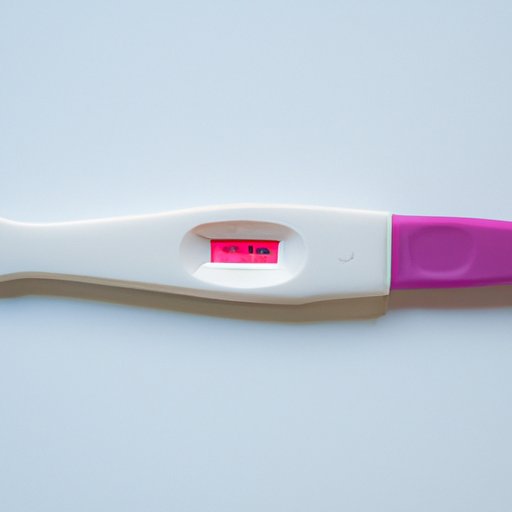
Introduction
When trying to conceive, waiting to confirm a pregnancy can be both exciting and nerve-wracking. However, it’s important to know how many days past ovulation to wait before taking a home pregnancy test to ensure the most accurate results. In this article, we’ll discuss the basics of the menstrual cycle and ovulation, the science behind pregnancy tests, the various types of home pregnancy tests available, and offer tips for managing emotions during the “two-week wait.”
Understanding the Menstrual Cycle and Ovulation
The menstrual cycle is the regular process by which a woman’s body prepares for pregnancy. It typically lasts between 28-32 days and is divided into three key phases: the follicular phase, ovulation, and the luteal phase. Ovulation is the process by which an egg is released from the ovary and is available for fertilization. To determine when you ovulate, it’s important to track your menstrual cycle, basal body temperature, and cervical mucus. Generally, ovulation occurs around 14 days before the start of your next period.
The Science Behind Pregnancy Tests
Pregnancy tests measure levels of the hormone human chorionic gonadotropin (hCG) in the urine. After conception, hCG levels begin to rise rapidly and can be detected in a woman’s urine as early as 7-10 days after ovulation. However, the detection rate varies depending on the sensitivity of the test and the levels of hCG in the woman’s body. Generally, waiting at least 14 days after ovulation can increase the accuracy of home pregnancy tests.
The Different Types of Home Pregnancy Tests
Home pregnancy tests come in various formats including digital, strip, and midstream. Digital tests have a clear “yes” or “no” result, whereas strip and midstream tests have either two lines or a plus sign indicating pregnancy. The sensitivity of each test varies as well, with some tests able to detect lower levels of hCG in the urine. It’s important to read the instructions carefully and follow them precisely to ensure the most accurate results.
The Emotional Rollercoaster of the “Two-Week Wait”
The time between ovulation and taking a home pregnancy test is often referred to as the “two-week wait.” This can be a stressful and emotional time for couples, particularly if they’ve been trying to conceive for a while. Coping strategies can include practicing self-care, setting realistic expectations, and seeking support from loved ones or online communities that specialize in fertility and pregnancy.
False Positives and Negatives
Pregnancy tests can occasionally give false results. A false positive occurs when a test indicates pregnancy but no fertilized egg is present. A false negative occurs when a test indicates no pregnancy but fertilization has occurred. Common reasons for false results include waiting too early to test, expired or faulty tests, or medical conditions such as an ectopic pregnancy or recent miscarriage. It’s important to retest if you receive an unexpected result or to seek medical attention if symptoms persist.
When to See a Doctor
If you’ve been trying to conceive for over a year without success, it’s advisable to see a doctor or a fertility specialist. Additionally, if you experience symptoms such as heavy bleeding, cramping, or persistent pain, it’s important to seek medical attention in case of early signs of a potential miscarriage or other complications arising from conception.
Conclusion
Timing is everything when it comes to detecting pregnancy with a home pregnancy test. Waiting at least 14 days after ovulation will give you the most accurate results. With the right support and information, couples can navigate the emotional rollercoaster of trying to conceive confidently, knowing when to take action and seek medical attention if necessary.




